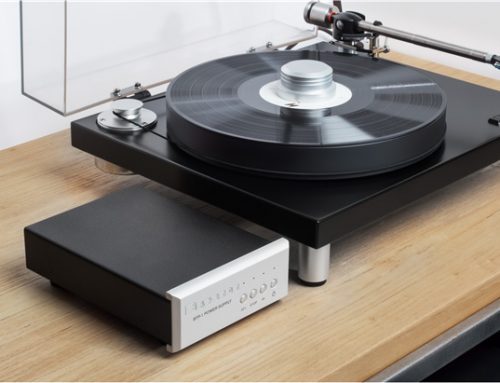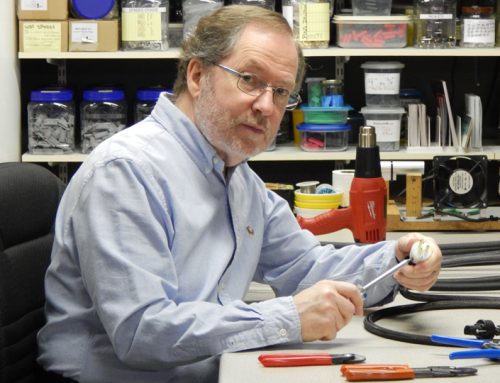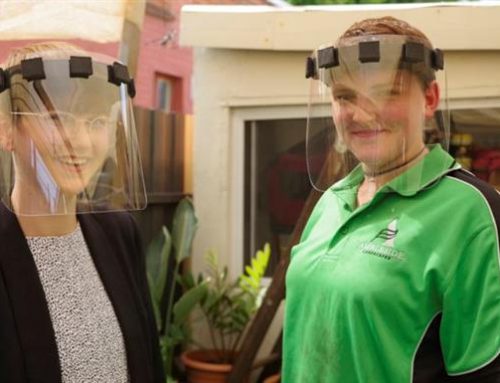
It’s truly remarkable just how different the same CD album can sound on different two-channel music systems. Every amplifier and every CD player has their own sound characteristics and qualities. Sometimes these characteristics are subtle and other times they can be very obvious. Below we evaluate three two-channel music systems ranging from $1000 to $2000, in a side by side comparison. Each system is composed of a two-channel integrated amplifier and a matching CD player from the same manufacturer.
To perform our listening tests, we connected each two-channel system to our reference Axiom Audio M80 v2 floorstanding speakers. These speakers have a frequency response rated from 34 Hz to 22 kHz (+/- 3 dB), an impedance of 4 Ohms and a sensitivity of 95 dB. We chose the M80s from Axiom Audio because they are natural sounding speakers with a revealing nature in a price range suitable for pairing up with our two-channel evaluation systems. The sound from each CD player to each integrated amplifier was supplied using a standard Monster Cable interconnect cable. The speakers were connected using regular 12-gauge speaker wires. The listening tests were performed by editors Suave Kajko and Octavio Umana.
In the following pages, we also suggest some other 2-channel hifi systems that you might want to look at, in various price ranges. Due to space constraints the descriptions of these systems are short and sweet – the basic intent is to provide you with some other brands and price ideas. For complete details about each system, please visit the manufacturer websites.

The Azur 540C CD player (Version 2) and the Azur 540A integrated amplifier (Version 2) present an affordable option to audio enthusiasts looking to build an entry-level two channel music component system. Each component is attractively priced at $499.
When unpacking the Cambridge Audio components, I was pleasantly surprised with how well they were packaged. Instead of finding the components in clear plastic bags, the Cambridge Audio gear came wrapped in soft cloth bags displaying the company’s logo in the middle. It’s a nice touch that emphasizes the company’s attention to even the smallest details.
Both the CD player and the integrated amp came supplied with the same remote control. The remote is capable of controlling all Cambridge Audio components from amps to CD/DVD players to tuners. A silver aluminium faceplate gives the remote a substantial weight and high-end feel. The remote’s soft rubber buttons and a plastic multi-directional pad are exceptionally comfortable to use and perfectly responsive. The buttons are also logically arranged which makes the remote easy to use. This is simply an amazing remote.
The chassis of each component consists of an all-metal body and a thick aluminium front panel. Both components are available in silver and black finishes, our evaluation units were silver. The front panel of the Azur 540A amp has four dials: a large one for volume and three smaller ones for bass, treble and balance. Located to the left of the dials are buttons for: power, speakers B and direct sound (which turns off all tone circuitry for the purest sound possible). To the right, are buttons for source selection which include aux/phono, CD, tuner/DAB, DVD, AV/MD and tape. Small blue indicators light up on the dials and above some of the buttons when the power is turned on. The Azur 540C CD player’s most prominent feature is an attractive white backlit display. A row of five buttons to the right of the display allow basic CD operation.
The Azur 540A is a two channel integrated amp capable of delivering 60 watts at 8 Ohms and 80 watts at 4 Ohms. It offers six line-level inputs, two tape loops and a preamp output. Cambridge Audio offers two phono stage (pre-amplifier) models that can be connected to one of the tape loops, if you want to connect a turntable to the Azur 540A. Two pairs of stereo speakers can be connected to this amplifier, which is a very welcome feature in this entry-level price range. The rear panel also incorporates a Cambridge Audio Incognito multi-room section which allows it to easily connect to other Cambridge Audio components in other rooms. The Incognito multi-room capability is explained in good detail with images on the Cambridge Audio website. The 540A has a frequency response rated from 5 Hz to 50 kHz (+/- 1 dB), a THD of 0.008 % (no weighing) at 1 KHz and a signal-to-noise ratio of 92 dB. The Azur 540C CD player incorporates a Wolfson WM8740 24-bit/192kHz digital-to-analogue converter. It has a frequency response rated from 10 Hz to 20 kHz (+/- 1 dB), a THD of 0.003 %, a dynamic range of 95 dB and a correlated jitter of less than 260 ps. Aside from a set of analogue RCA outputs, the CD player also has digital coaxial and digital outputs. Both components have IEC (power) sockets with removable power cords which means that you can experiment with upgraded power cords.
While connecting cables at the back of the components, I was greeted with another pleasant surprise – the rear panels of both components were labeled incredibly clearly. Each connector had a label below and an upside down label above. The upside down label is meant to make life easier when connecting cables while leaning over the top or the side of the component. So simple, yet so brilliant. All manufacturers should label their components like this!
After listening to only a couple of songs, it was clear that this amplifier and CD player had a natural presentation. During longer listening sessions, the sound performance was consistent throughout the entire frequency range with a good tonal balance and great dynamics. The amplifier provided crisp highs and a clean mid-range. It drove our Axiom Audio M80 towers to great depths effortlessly. The bass was powerful when required but always controlled, even at high volume levels. The system provided a good-sized soundstage and plenty of musical details. Jazz and classical recordings were delivered with subtle details and complex recordings contained all their layers.
While listening to the Cambridge Audio system, I appreciated the little LED lights on each of the control dials, especially the volume control. This proved to be a great feature on an amplifier that does not have a display. Both components not only have a sophisticated look, they also have a top notch build quality. All the buttons feel solid and all the dials have a firm feel but allow for accurate adjustments. The remote control is very impressive in this price range. It has a good weight to it because of its aluminium face and its rubber buttons are comfortable to touch and appropriately responsive. The multi-directional pad works great for navigating CDs. Direct input buttons on the remote allow for quick access to each of the amplfier’s inputs. This is certainly one of the nicest remotes that I have played with in a long time. The CD player’s display showed the number of tracks on the inserted CD in small square boxes – you have to be close enough to the display in order to read them.
The Cambridge Audio Azur 540A amplifier and 540C CD player system provided an enjoyable listening experience. This two-channel system managed to capture my interest and hold it during extended listening sessions. Each component included features not found in similarly priced separates such as a second speaker output, multi-room connection capability, lighted control dials and thick aluminium front panels. Given their sound and build quality as well as attractive price tags, these Cambridge Audio components are ideal for building a respectable two-channel music system on a small budget.
Manufacturer: Cambridge Audio
www.cambridgeaudio.com
Distributed in Canada by Plurison 1-866-271-5689
Price:
$499 (Azur 540C Ver. 2 CD player)
$499 (Azur 540A Ver. 2 Int. amp )
Azur 540C Ver. 2 CD player
• Frequency Response: 10 Hz to 20 kHz +/- 1dB
• THD: 0.003%
• D/A Conversion:24-bit/192 kHz
• Correlated Jitter:< 260ps
Azur 540A Ver. 2 Integrated Amp
• Power Output: 60 Watts into 8 Ohms or 80 Watts into 4 Ohms
• Total Harmonic Distortion (into 8 Ohms 80% rated power): 0.008% THD (No weighting) @ 1kHz
• Frequency Response: 5 Hz to 50 KHz +/- 1dB
• Signal to Noise Ratio (No weighting): >92dB
• Slew rate (into 8 ohms): >30V/uS
NAD C525BEE CD Player and NAD C325BEE Integrated Amplifier Review

NAD offers a wide range of integrated amplifiers and a choice of two different CD players suitable for every wallet. The C525BEE CD player and the C325BEE integrated amplifier are NAD’s most affordable building blocks for an entry-level two channel music system. The CD player is priced at $450 and the amplifier goes for $500.
Both the CD player and the amplifier feature rigid metal enclosures and familiar dark gray plastic face plates that NAD has been using in most of their components for many years. Each component came packaged with its own remote, although the SR 5 remote bundled with the amplifier can be used to control both pieces of gear.
The front panel of the C325BEE amplifier contains seven buttons for source selection and dials for bass, treble, balance and volume. There are also buttons for power, tone defeat (which by-passes the tone control section) as well as a headphone jack and 3.5 mm stereo plug for mp3 players. The rear panel features 7 RCA outputs, 2 tape loops and a preamp output. A matching NAD PP-2 phono stage can be connected to the tape loops in order to connect a turntable to the amplifier. The C525BEE CD player’s front panel has eight disc navigation buttons, a power button and an attractive, blue backlit display. When a CD is inserted, the display shows the number of tracks on the CD in little square boxes. The rear panel of the CD player contains a single set of RCA outputs and a digital coaxial output. Both remote controls are made of plastic with rubber buttons. They are both comfortable to hold and equally responsive. The SR 5 remote contains direct input buttons and worked very well for controlling all functions of both components in our set up.
The C325BEE is a brand new, updated version of the C320BEE integrated amplifier with improved sound performance. It uses several innovations that trickled down from NAD’s top of the line Masters Series. The C325BEE is rated at 50 watts for each of its two channels at 8 ohms and is capable of driving 4 ohm speakers with ease. It has a frequency response rated from 20 Hz to 20 kHz (+/- 2 dB), a THD of 0.02% (20 Hz – 20 kHz from 250 mW to rated output) and a signal-to-noise ratio of 100 dB (1 kHz). The C525BEE CD player is an updated version of the C521BEE. This player was so new at the time of this review that NAD did not have its specifications posted on their website. It allows playback of CDs, CD-R and CD-RW discs recorded in the 16-bit 44.1 kHz PCM format. Output is provided in the forms of analogue L/R RCA and digital coaxial. The power cords are permanently attached to both components so they can’t be upgraded.
Instead of plugging both components’ power cords into a power bar, I plugged the CD player’s power cord into the switched AC outlet on the back of the amplifier. This allowed both components to power on/off with a single press of the power button on the remote. Otherwise, each component would have to be powered on individually. This is a very useful feature that nicely integrated this two channel system.
The first disc that I listened to on the NAD pair was Jarre in China. Then, I followed with some tracks from The Best of Chopin (Golden Classics) and Norah Jones’ Feels Like Home albums. A few of the tracks from Jarre in China showed that the NAD set up was capable of producing a soundstage with an impressive depth – much larger than other systems in this price range. The Axiom Audio M80s assisted me in testing this because they can certainly paint a very large soundstage. It didn’t take long for me to conclude that the NAD amplifier had a pleasing, warm character that brought realness to every song that I listened to. The mid-range was incredibly clear and the highs were smooth and crisp. The bass performance of the amplifier was clean and tight, with a good amount of punch. The dynamics and pacing of this system were great – the music flowed with a sense of pleasantness and involvement. The dynamic headroom was substantial and always there when needed. The combination of the warmth and the detail resolution of this system provided for a truly fantastic listening experience.
For those who like to stretch the amplifier’s power capabilities and listen to music at very loud levels, NAD has included a Soft Clipping switch at the rear of the C325BEE. When an amplifier is driven to its limits, a harsh, distorted sound can be heard at peak volume levels. With the Soft Clipping turned on, the NAD’s circuitry gently limits the output of the system to eliminate distortion if the amplifier is overdriven. A green LED on the front panel indicates when this feature is turned on. I cranked the volume with this feature turned on and it did a great job, although I never turn the volume up this high when listening to music for pleasure.
Surprisingly, the buttons on the front panels of both components feel rather flimsy, especially compared to the other components in this test – fortunately they have nothing to do with sound performance. The tone balance and volume dials on the other hand appear to be of much better quality.
There is no question about it, the NAD duo created a sophisticated two-channel music system that was all about the music. Its musical ability aspires only to higher price separate audio components – for this it shines above many similarly priced components. With a price of $950 for both pieces, it’s affordable enough even for non-audiophiles who have an appreciation for great quality sound.
Manufacturer:NAD Electronics
www.nadelectronics.com
Distributed in Canada by Lenbrook Canada 905-831-6555
Price:
$450 (C525BEE CD player)
$500 (C325BEE integrated amplifier)
C525BEE CD player
• 20-bit Burr-Brown Sigma Delta DAC chip
Complete technical details about the C525BEE were not available at press time because this model is a new addition to the NAD line-up. For more info check the NAD website at www.nadelectronics.com.
C325BEE Integrated Amplifier
• Power Output: 50W into 8 Ohms
• Total Harmonic Distortion (20 Hz-20 kHz): 0.02%
• Frequency Response : ±0.2dB 20 Hz-20 kHz
• Signal/noise ratio; ref 1W: 100dB
• Signal/noise ratio; ref rated power: 117dB
• Clipping power: 68W (18dBW)
• IHF dynamic headroom at 8 ohm: +3.4 dB
ARCAM DiVA CD73 CD Player and ARCAM DiVA A65 Plus Integrated Amplifier Review

In today’s world of two-channel audio, there is somewhat of a void between entry-level and high-end components. British-made ARCAM is one of only a handful of brands that fits this mid-performance category. The ARCAM DiVA A65 Plus Integrated Amplifier and the DiVA CD73 CD Player are priced at $995 each. Although ARCAM labels these components as entry-level, they are only entry-level compared to other ARCAM gear. For the purposes of this two-channel system article, we included these components in the mid-range category.
Both our ARCAM DiVA review components were finished in black with silver buttons and dials. A silver finish is also available for each component. The buttons and dials are always silver, regardless of which casing colour you choose. The remotes supplied with both components are identical – black casing with black buttons and white labels. Both remotes are capable of controlling most ARCAM separates such as amplifiers, CD players and tuners.
The chassis and front panels of both pieces of gear are constructed out of solid metal. The front panel of the A65 amplifier has 5 dials for: source selection, volume, bass, treble and balance. There are also buttons for the tape input, direct sound (which by-passes tone controls) and B speakers as well as a headphone jack. The A65’s rear panel contains five line-level inputs, a phono input, a tape loop and a pre-out. Also in the rear, are two sets of speaker terminals and a ground terminal for use with a turntable that has a ground wire. The A65 is capable of delivering 40 watts to 8 ohms speakers (with two channels driven) and 80 watts to 4 ohm speakers (with a single channel driven). It has a frequency response rated from 20 Hz to 20 kHz (+/- 0.25 dB) and a THD of 0.01 % (8 ohms, 1 kHz).
The CD73 CD player has a clean face containing only eight CD navigation buttons plus a power button and a green display. The CD73’s rear panel features dual RCA audio outputs, a digital coaxial/optical output as well as a IR input and a 12 volt trigger (for multi-room installations). The CD73 player contains a 24-bit multilevel Delta-Sigma digital-to-analogue (DAC) converter from Wolfson MicroElectronics. It has a frequency response rated from 0.3 Hz to 20 kHz (+/- 0.5 dB), a THD of 0.003 % and a signal to noise ratio of 112 dB.
Both ARCAM components have IEC sockets allowing the power cords to be upgraded if you choose to do so.
When I listened to the first few songs, I got a good sense of the build-quality of the ARCAM components. The buttons on the amplifier and the CD player definitely had a solid, high-quality feel. The amplifier’s dials also had a premium feel allowing for precise adjustments. However, I can’t say that I enjoyed using the supplied remote control. First, the buttons on the remote are all exactly the same shape, size and colour and are not arranged particularly well. Secondly, the small, hard plastic buttons are not very comfortable to use. Luckily, the remote has nothing to do with sound performance.
The delivery of this ARCAM A65 and CD73 duo was very impressive from the get go on our reference Axiom Audio M80 towers. Its ability to resolve the subtlest of musical details in mid and high frequencies was astounding. While listening to tracks from the very well recorded Jarre in China disc, details began appearing that the entry-level systems in our tests did not deliver. During one of the songs, what sounded like an electronics effect in the background on the entry-level systems, was clearly a small bell when played on this ARCAM system. The microdynamics were equally spectacular. When I listened to recordings with larger numbers of instruments, each instrument was clearly distinguished without compromising any of the presentation. The performance of the CD73 disc player was vivid and incredibly clear. When evaluating the other two entry-level systems for this article, I always felt that the Axiom Audio M80s could do more. This ARCAM duo truly showed off the crystal clear mids and smooth treble that the M80 towers were capable of playing.
In the bass department, the A65 amplifier had the ability to clearly resolve individual bass notes and provided enough power at typical listening levels. Unless you plan to play your system very loud for extended periods of time, the A65 should do just fine.
The soundstage of this system was undeniably three dimensional and stretched well beyond the walls of the listening room. This was certainly a treat when listening to large orchestra performances such as the tracks from The Best of Chopin compilation.
The ARCAM DiVA A65 Plus and DiVA CD73 system provided an accurate, natural sound whether it came to instruments or vocals. The system’s overall performance was open, dynamic and simply sweet to the ears. If you’re looking for a two-channel system that is capable of presenting the subtlest musical details rather than a lot of power, these components should definitely be on your list of gear to listen to. All in all, the performance, build-quality and sophisticated looks of this system made it well worth its price which came just shy of $2000.
Manufacturer:
ARCAM
wwww.arcam.co.uk
Distributed in Canada by Erikson Consumer 1-800-567-3275
Price:
$995 (DiVA CD73 CD player)
$995 (DiVA A65 Plus Int. Amp)
DiVA CD73 CD player
• THD (0db, 1khz): 0.005%
• Conversion system: Wolfson WM8740, multi-level Delta Sigma DAC
• Signal to noise ratio: 112 dB
DiVA A65 Plus Integrated Amp
• Power Output: 40 Watts (both channels driven at 8 Ohms, 20 Hz-20 kHz)
• Power Output: 80 Watts (single channel driven at 4 Ohms, 1khz)
• Total Harmonic Distortion (into 8 Ohms 80% rated power, 1 kHz): 0.01%
• Signal to Noise Ratio: 100 dB
• Phono input
• Tone controls, max boost/cut: +/-8 dB
Other entry-level two-channel music system suggestions
Cambridge Audio Azur 340A Integrated Amplifier ($359) and Azur 340C CD Player ($359)
Just getting into 2-channel audio and don’t want to spend a lot of money? This is the most affordable 2-channel music system that we could find. A custom designed, oversized low-flux toroidal transformer enables the 340A to deliver an impressive 40 watts per channel into 8 Ohms. Cambridge Audio says that the 340A includes a low-noise preamp stage with sophisticated input switching technology for a budget amplifier. The 340C CD player delivers great performance at a competitive price point. Its design uses high quality Sony laser optics and the same Cambridge Audio servo circuitry as found in the 540C and 640C players. www.cambridgeaudio.com
Marantz PM7001 Integrated Amplifier ($799) and Marantz CD5001 ($330)
The PM7001 integrated amplifier features a high speed instantaneous current supply power amp design. It delivers 2 x 70 Watts (into 8 ohms) or 2 x 100 Watts (into 4 ohms). In addition to regular line-level inputs, it also includes a moving magnet phono input. Two sets of speakers can be connected to the PM7001. The CD5001 CD player provides playback of CD and CD-R/RW discs and uses a 192 kHz/24-bit Cirrus Logic CS4392 D/A converter. At just over $1100, this Marantz duo is a very affordable audio enthusiast-quality 2-channel system worth taking a listen to. www.marantz.com
Other mid-range two-channel music system suggestions…
Onkyo A9555 Integrated Amplifier ($699.99 US) and Onkyo DX-7555 CD Player ($599.99 US)
These two new hifi components, released from Onkyo this summer, certainly sparked our interest. The A-9555 stereo integrated amplifier features Onkyo’s 4th generation VL Digital amplifier technology, a unique implementation of hybrid class ‘D’ amplification. Because of the high efficiency of this design, the amplifier effortlessly delivers a continuous 100 watts per channel into 8 ohms, and 200 watts into 4 ohms. It features inputs for 7 stereo sources including a phono preamplifier circuit. The Onkyo DX-7555 CD player is designed to deliver superior audio performance to audiophiles and stereo music enthusiasts. The player is compatible with CD, CD-R/RW, and MP3-encoded discs, and features a super-precision clock circuit which has a tolerance of just +/- 1.5 ppm (typical tolerance values are about 50 ppm,) for remarkably low jitter and high-fidelity performance. Additionally, users can manually adjust the clock frequency for a degree of sonic imaging control, an impressive feature at this price. The player also features a Wolfson Microelectronics DAC circuit with user-selectable profiles for either “sharp” (flat up to 20 kHz) or “slow” (gradual) high frequency rolloff, to suit differing source material and user preferences. www.onkyo.ca
Roksan Kandy Integrated Amplifier MKIII ($1495) and Roksan Kandy CD Player MKIII ($1495)
Looking for something that sounds sweet and looks sexy in the mid-price range? The British-built Kandy line from Roksan offers both qualities. The CD player, as well as the new L.III integrated amplifier, promises to meet the needs of the most discerning music listener. The integrated amplifier is capable of delivering120 Watts, into 8 Ohms and 185 Watts, into 4 Ohms (with both channels driven). It features completely revised amplifier internals and phono input. The Kandy Integrated CD Player MKIII employs state-of-the-art technology and precision engineering to exploit the full potential of CDs. A couple of its highlights include a de-coupled mechanism and a super precision, ultra stable custom-made master clock crystal. www.roksan.co.uk and www.kandyline.co.uk
Rega Brio 3 Integrated Amplifier ($795) and Rega Apollo CD Player ($1295)
The Brio 3 is a third generation amplifier from Rega that boasts a modified power supply and an up-rated power transformer. The increased power output (49 watts per channel into 8 Ohms) of the Brio 3 greatly improves control and musical performance over its predecessor. The output amplifier is built around a pair of Sanken 150w Darlington output transistors and an electronic circuit protects against shorted speakers and reactive loads of 1.7 Ohms or less. The power supply uses the new rated toroidal transformer and 10,000µF smoothing capacitors that provide enough current to drive the hardest of loads. The Rega Apollo CD player analyses the disc to be played and adjusts itself to the disc in order to give optimal trouble free reading and great sound quality. This process takes a few short seconds but Rega promises that the resultant musical improvements are well worth the wait. The CD player uses chip-sets that allow optimum musical performance and optimized jog or vibration resistance as well as a WM8740 Sigma Delta 24-bit DAC with differential outputs. Complete details can be found on the company’s website. www.rega.co.uk
Myryad Z140 Integrated Amplifier ($1295) and Z110 CD Player ($1395)
The Z Series from Myryad has a high-end look and sonic performance to match it. The Z140 amplifier features six inputs including a tape monitor loop, a headphone jack, and a moving magnet phono pre-amp. It is rated at 50 Watts per channel (with two channels driven into 8 Ohms) with a less than 0.1% THD. The Z110 CD player includes seven separately regulated power supplies, enhanced DAC decoupling and generous reservoir capacitors deliver superior bass clarity and impact, ultra-wide soundstaging and brilliant mid-range focus and detail. It uses a 24bit, 96 kHz deltasigma digitalanalogue converter. www.myryad.co.uk
High-end two-channel music system suggestions…
NAD Masters Series M3 Integrated Amplifier ($3500) and Masters Series M55 Digital Disc Player ($2500)
The NAD Masters Series components offer audiophile performance in a new and distinctive industrial design. The M3 pushes the classical analogue circuit design to unprecedented levels of performance to deliver an amplifier totally free from any audible noise or distortion. It delivers 2-channels of 180-watts of pure power. The M3 offers internal switching for two pairs of speakers and tone controls as well as a second Zone 2 output with independent commands and even its own remote control. Some of its highlights include a precision volume attenuator with 0.5 dB steps and a range of 87.5 dB and a remote balance control with 0.5 dB steps. Music lovers will enjoy the DVD-Audio, SACD, MP3 and WMA playback capabilities of the M55 disc player. Video fanatics will enjoy the M55’s Faroudja DCDi chipset which works to upconvert standard DVDs to high definition formats of 720p or 1080i. www.nadelectronics.com
Cary Audio CAI 1 Integrated Amplifier ($2495) and CDP-1 CD Player ($2495)
These stylish, dual-tone silver and black components from Cary Audio Concept Series should please the most demanding music lovers. The CAI 1 solid state integrated amplifier is rated at 125 Watts per channel at 8 Ohms and 250 Watts per channel into a 4 Ohm speaker load. It is a class A/B design with four RCA inputs, CINEMA bypass, tape monitor loop and one balanced XLR input. The CDP 1 player uses a 24 bit/192 kHz Burr Brown 1792 DAC chip set and does HDCD decoding in DSP. The player can upsample a CD from 44.1 to 96, 192, 384, 512 or 768 kHz. It also has XLR and RCA analog outputs. www.caryaudio.com
ARCAM FMJ A32 Integrated Amplifier ($3000) and FMJ CD36 CD Player ($3000)
The FMJ series is ARCAM’s answer to true audio fanatics. The A32 amplifier uses state-of-the-art audio components and a massive power supply to deliver effortless performance. Power is rated at 100 Watts per channel, and it is capable of driving even the most difficult speaker loads. The amplifier offers 5 line-level inputs, 2 tape loops and a phono stage. The CD36 CD player incorporates true state-of-the-art electronic and mechanical design techniques that bring music reproduction in the home closer than ever to the sound of real instruments. It uses a high performance 192 kHz 24-bit converter and multiple 24-bit digital to analogue converters. www.arcam.co.uk
14 Comments
Leave A Comment
You must be logged in to post a comment.






… [Trackback]
[…] Here you will find 37006 more Info on that Topic: novo.press/two-channel-solid-state-music-systems-group-test-cambridge-audio-nad-arcam-and-more/ […]
… [Trackback]
[…] Find More to that Topic: novo.press/two-channel-solid-state-music-systems-group-test-cambridge-audio-nad-arcam-and-more/ […]
… [Trackback]
[…] Read More Info here on that Topic: novo.press/two-channel-solid-state-music-systems-group-test-cambridge-audio-nad-arcam-and-more/ […]
… [Trackback]
[…] Find More Info here on that Topic: novo.press/two-channel-solid-state-music-systems-group-test-cambridge-audio-nad-arcam-and-more/ […]
… [Trackback]
[…] There you can find 7800 additional Information on that Topic: novo.press/two-channel-solid-state-music-systems-group-test-cambridge-audio-nad-arcam-and-more/ […]
… [Trackback]
[…] Read More to that Topic: novo.press/two-channel-solid-state-music-systems-group-test-cambridge-audio-nad-arcam-and-more/ […]
… [Trackback]
[…] Read More on that Topic: novo.press/two-channel-solid-state-music-systems-group-test-cambridge-audio-nad-arcam-and-more/ […]
… [Trackback]
[…] There you will find 44667 additional Info to that Topic: novo.press/two-channel-solid-state-music-systems-group-test-cambridge-audio-nad-arcam-and-more/ […]
… [Trackback]
[…] There you will find 62186 more Information to that Topic: novo.press/two-channel-solid-state-music-systems-group-test-cambridge-audio-nad-arcam-and-more/ […]
… [Trackback]
[…] Find More to that Topic: novo.press/two-channel-solid-state-music-systems-group-test-cambridge-audio-nad-arcam-and-more/ […]
… [Trackback]
[…] Find More here to that Topic: novo.press/two-channel-solid-state-music-systems-group-test-cambridge-audio-nad-arcam-and-more/ […]
… [Trackback]
[…] Read More here on that Topic: novo.press/two-channel-solid-state-music-systems-group-test-cambridge-audio-nad-arcam-and-more/ […]
… [Trackback]
[…] Read More to that Topic: novo.press/two-channel-solid-state-music-systems-group-test-cambridge-audio-nad-arcam-and-more/ […]
… [Trackback]
[…] Find More on on that Topic: novo.press/two-channel-solid-state-music-systems-group-test-cambridge-audio-nad-arcam-and-more/ […]